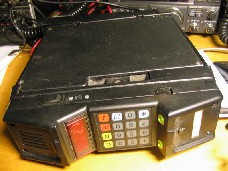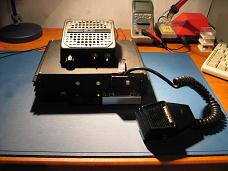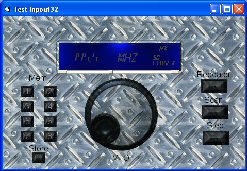PROJECTS:
ANTENNAS:
5m vertical multiband GP antenna
An 80 meter multiturn magnetic loop
TX,RX:
Computer controlled Mobira RC25
Telcom TE-157 - remove the beep
OTHER:
Important links
COMMUNICATE:
Questions, comments? Type them here!
OR email to:

Last update 18.2.2008
Intro:
The behaviour of VHF frequencies have always inspired me. Unfortunately, I didn't have any transceiver for 2 meters at the beginning of my Ham career. I didn't have any extra money, so just buying the transceiver was totally out of question. I heard that there are some old VHF transceivers that are quite easy to modify for 2 meters. Therefore, I joined the Finnish ham email posting list, which is full of hams specialized to modify old commercial stuff to be used on ham bands. In no time, I was heard and OH6SC Jukka, who had few extra Nokia RC25 radios in his junk box, sold me one.
The modification:
After the few week HUGE search through the internet and with the help of OH6SC (thanks Jukka) I had all the documentary available for the RC25 -project. First of all, I hated the original essence of the RC25. It was big and I didn't want to operate with a radio which looked like an old mobile phone, ugh. Years ago, I modified Mocoma 45 CB radio, so that I was able to control frequencies with computer. I think it was the main reason why I decided to use computer to control the RC25. Also, the "original" modification for RC25 makes it a very limited 2 meter radio. It wouldn't have had any of those sophisticated functions like scanning, selectable repeater split, frequency memories and so on. I realized that figuring out the routings of million wires, I just decided to cut them all, take the PCBs off and rewire the whole thing based on the schematics and my modification ideas.
Tuning the RF sections:
Making the modifications for the PCB cards were quite easy when they weren't attached to the RC25's frame. I made the modifications, put the PCB cards back and made all the necessary wirings. The original eprom logic control board was left out, because computer was about fill that task. At this point is was time to make some tuning. First of all, I had to pickup the center frequency somehow, so I just put +5 volts to all needed pins of the PLL to get it on 145 MHz. I attached the FRQ meter and power meter to the transceiver and adjusted the transmitter for full output. I borrowed my friends 2 meter HT (before I got my own) to act as an signal generator. The HT was kept on the other room, far enough, to weaken the signal for a proper level. RF RX sections were now tuned. Later I retuned the whole radio with a Rohde & Schwarz professional radio measuring equipment at our club.
Computer and radio
I knew that the easiest way would be to control the PLL of the radio and other functions with computer's LPT/printer port. It will already provide 8-bit output, though, with full selection of different channel steps, I needed 9-bit control, plus control pins for sensing PTT etc. but that wasn't really a problem, there is huge amount of controllable pins on LPT-port.
I attached the D25 connector to the back of the RC25 and wired the PLL to it through a simple RC network to cut out of unwanted signals. I had to made few transistor switches/buffers to get out buffered information to the D25 (and to the computer's LPT port), like TX/RX and Squelch open/close -data. Those informations were needed for example for the repeater split etc.
It took few days before I had the first version of the program, which BTW was made with qbasic. The first program run really nicely on my Windows 95 -computer, which was dedicated to ham radio stuff (digimodes). Unfortunately, when I bought my new computer, which was equipped with Windows XP, I had to rewrite the whole program with Visual Basic because qbasic at XP can't have direct access to external ports of the computer. After I wrote the new program, I didn't felt so unfortunate, te software was more visual (for my taste at least) and it worked really well. And I could convert it to an EXE, nice!


